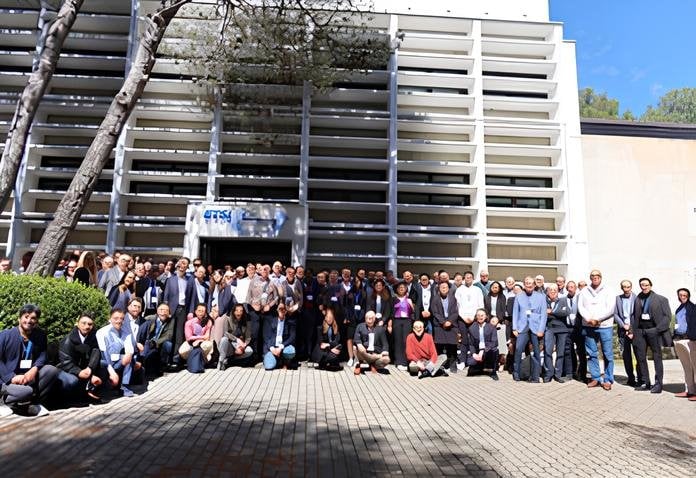electronics-journal.com
17
'24
Written on Modified on
Aiming high: ETSI Conference on NonTerrestrial Networks underlines critical role of NTN in realizing tomorrow’s global 6G vision
This year’s first ETSI Conference on Non-Terrestrial Networks has stressed the importance of technical standardization in delivering a fully connected planet via NTN, a key element of tomorrow’s global 6G networks.

Held from 3-4 April 2024 at ETSI’s Sophia Antipolis headquarters, the event was co-organized with the European Space Agency (ESA), the 6G Smart Networks and Services Industry Association (6G-IA) and the Smart Networks and Services Joint Undertaking (SNS JU).
Titled ‘Non-Terrestrial Networks, a Native Component of 6G’, the 2-day conference attracted over 200 participants from 25 countries, including experts in standardization and research as well as industrial representation from the mobile, satellite and wider space industries. Delegates shared perspectives on NTN use cases, candidate technology solutions, current research status and standardization roadmaps. Day one sessions focused on the opportunities and challenges of integrating terrestrial and non-terrestrial networks within tomorrow’s global communications landscape. The second day afforded a deep dive into numerous cutting-edge NTN and 6G research & development initiatives in Europe and around the world.
Non-Terrestrial Networks are wireless communication platforms operating above the surface of the Earth, typically achieved using satellites in low, medium or geostationary orbit as well as drones, High Altitude Platforms (HAPS) and other aerial systems. A component of 5G since 3GPP Release 17, NTN offers truly seamless global coverage to support a wide range of communication applications that demand high availability and resilience.
NTN will also be a crucial element of tomorrow’s 6G communication ecosystem. Currently the subject of early pre-standardization discussions in 3GPP, 6G will feature native integration of NTN from the outset, allowing optimization of service delivery via both terrestrial and non-terrestrial networks in 6G. 6G NTN is also anticipated to provide increased performance and service capabilities compared to NTN in 5G.
“NTN is already well recognized as a pivotal part of the 6G story, with its development supported by significant long-term investments by Europe’s R&D communities” states Luis Jorge Romero, ETSI Director General. “The successful realization of NTN depends on effective collaboration between terrestrial and non-terrestrial communities, supported by dialogue between industry, standardization groups and research/academia. The key enablers for NTN’s success in 6G include a flexible regulatory and licensing environment that provides timely access to sufficient globally harmonized spectrum – all underpinned by robust technology standards that support smooth integration of cost-effective, reliable and interoperable NTN and TN solutions within the timeframe for 6G as envisaged by 3GPP.”
Quotes from co-organizing partners:
Antonio Franchi, Head of 5G/6G NTN Programme Office, ESA
“The satellite community’s proactive engagement in 3GPP has already led to the inclusion of NTN since Release 17, driving the active endorsement of NTN by terrestrial stakeholders and a wide range of verticals. From this baseline, industry must now focus on the development of flexible, resilient technology solutions that are cost-effective, secure, providing global coverage, freely scalable and energy efficient, by extending the presence of NTN in 3GPP, including all satellite frequency bands, broadband and narrowband services, with transparent and regenerative satellite payloads.”
Javier Albares Bueno, Head of 5G/6G Program at the Smart Network and Services Joint Undertaking (SNS-JU) of the European Commission
“What’s particularly exciting is the vast array of future NTN use cases and applications that are yet to be discovered. As we pave the way to an even more connected and resilient future, it’s essential that significant investment in innovation is channeled into tangible objectives – including standards, infrastructure deployments and timely commercialization of NTN services.”
Dr Colin Willcock, Chairman of the Board, 6G-IA
“Multiple research and innovation projects are working on the technologies that will eventually shape 6G standards, with NTN as a native component. Europe must consolidate its NTN leadership position with an open and collaborative R&D approach, bringing together industry and academic work leveraged through standardization. 6G-IA is committed to this objective.”
Conference presentations can be accessed here.
www.etsi.com

